Include a Topper!
-
Happy Birthday Banner
$9.00 -
Gingerbread Cake Topper
$15.00
Add Ons
Your cart is currently empty!
Since 1949 celebrating 75 years. Order online or call us at 1 800 GAMBINO (426-2466)
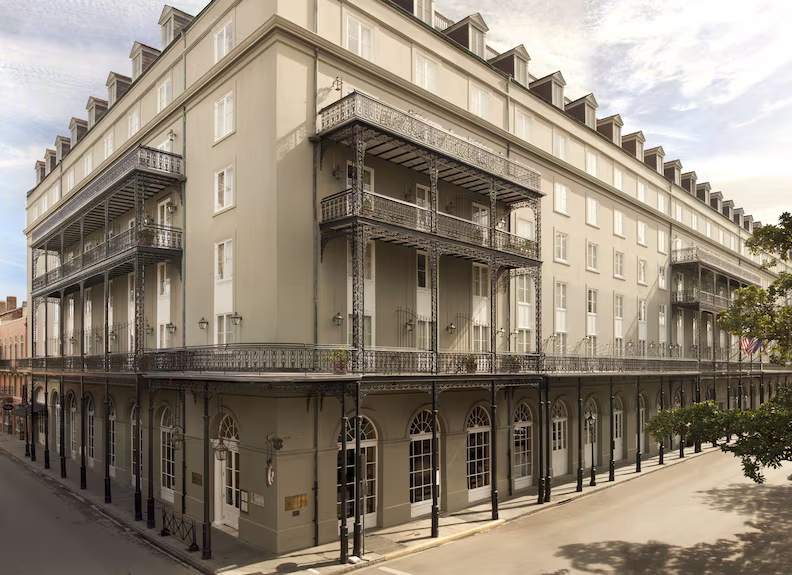
In our most recent blog post, we began exploring the small, mysterious street in the French Quarter that—at various points in history—has gone by Exchange Place, Exchange Alley, and Exchange Passage. We mentioned how the tiny thoroughfare ran between two exchanges (which explains where the name came from).
Exchanges were large, opulent hotels where travelers stayed and locals conducted business. They included bars, restaurants, libraries, and much more.
On one end of the alleyway, near Canal Street, was the Mercantile Exchange, which was built in 1835 with the support of the city’s growing Anglo American contingent that began arriving in New Orleans after the Louisiana Purchase of 1803. These new citizens were in a tug of war for power with the city’s Creole population and they hoped the building of this exchange in the French Quarter would help to shift influence in their direction.
But, as mentioned, there was a second Exchange in the area. That building is where our focus is about to shift.
Approaching an icon
In our last post, we had reached where Exchange Place runs into the Louisiana Supreme Court building at Conti Street.
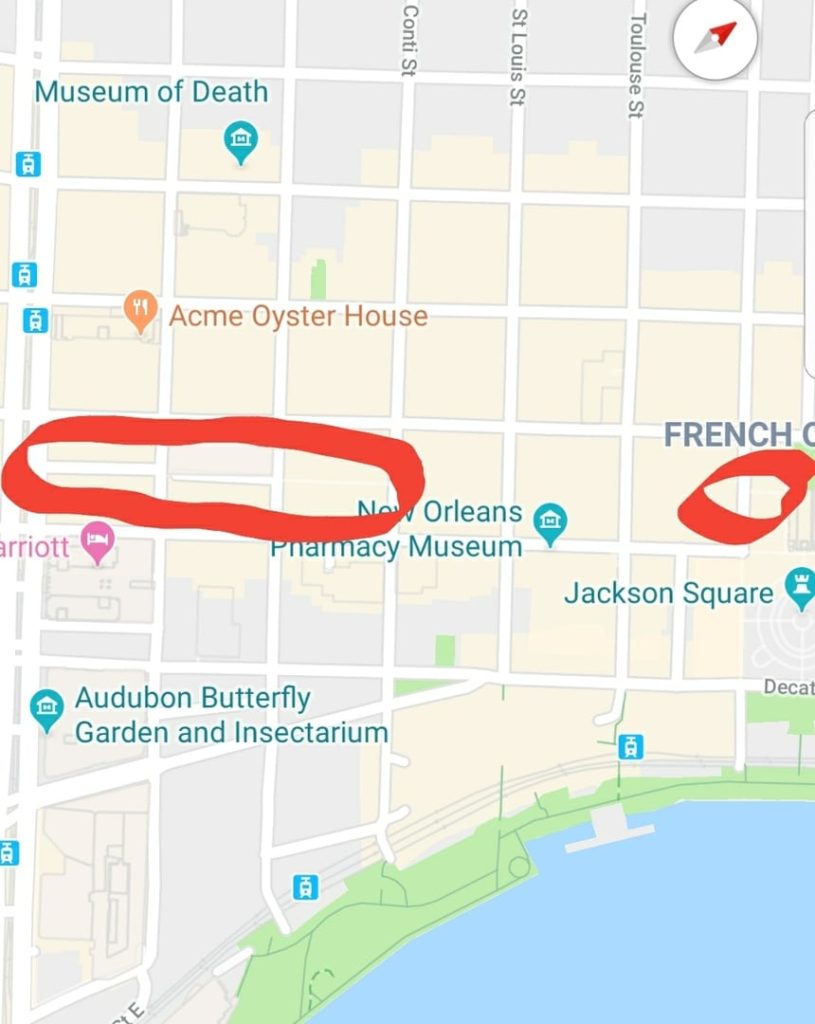
The courthouse wasn’t completed until 1910. This means that, for nearly 80 years before that, Exchange Place actually ran one more block to St. Louis Street.
Walk around the massive court building to pick up where Exchange Place would have been on the next street, where it intersects with St. Louis. Here—according to John Chase’s book, “Frenchmen, Desire, Goodchildren: … and Other Streets of New Orleans”—is where pedestrians would have encountered the street’s most vibrant “attractions.”
The author explains that, at this corner, a man hawked “a strange new-fangled beverage called beer,” and that for quite some time, this was the only place in New Orleans to get it!
This corner of Exchange Passage and St. Louis Street also hosted Charles Hicks’ cockpit, where he famously “staged hotly contested cockfights.”
But local historian, Richard Campanella, in an article he wrote, describes the main attraction and the second exchange in our story:
“One of the best-known exchanges in the early 1800s had so many uses and owners that just about everyone referred to it differently. Located at what is now 501 Chartres, the enterprise started as Tremoulet’s New Exchange Coffee House and became Maspero’s Exchange in 1814, then Elkin’s Exchange after Maspero died in 1822.
“John Hewlett renamed it Hewlett’s Exchange by 1826, although the enterprise also went by the name, Exchange, or New Exchange Coffee House, Hewlett’s Coffee House, or, for Francophones, La Bourse de Hewlett. The two-story corner structure boasted, behind its Venetian privacy screens, a 19-foot-high ceiling, four chandeliers, framed maps and oil paintings (described by one Northerner as “licentious”), wood-and-marble finishing, an enormous bar with French glassware, and billiards and gambling tables upstairs.
“Hewlett’s Exchange buzzed with trilingual auctioning activity for everything from ships to houses to land to sugar kettles to people legally changed hands. The city’s seven auctioneers worked the block on a rotating schedule, every day except Sunday, and it was likely here that a young Abraham Lincoln witnessed a slave auction on his 1828-1831 flatboat visits to New Orleans.”
In 1835, New Orleans made the questionable decision to split into three separate municipalities. This further intensified the rivalry between Anglo and Creole New Orleanians, because now they were competing separately for investment, instead of together as one city.
To attract those investments, the Anglo-Americans built the St. Charles Hotel—one of greatest American hotels of its time—upriver of Canal Street in 1837. It had all of the one would find in a multi-functional exchange.
In order to compete, the Creole business community had to respond. That is exactly what they did the following year when they built the St. Louis Hotel—originally called The Exchange Hotel—on this corner of Exchange Passage and St. Louis.
Just like the previous exchanges that existed here (as the Campanella article mentioned), the St. Louis Hotel housed an exchange inside, known simply as “The City Exchange.”
The hotel was the center of social activities for Creoles and visiting Europeans. It was meant to be a Creole place; a place for aristocrats to eat, drink, make love, and buy and sell commodities. Businessmen of the French Quarter would go to register sales and consummate business here, and it was also the site of many balls and banquets.
Predictably, and unfortunately, this was the site of many kinds of business. Walking into the hotel in the 19th century, one would have seen a large auction block—set under the building’s grand rotunda—where slaves were sold. Those that weren’t sold were held in slave pens around the French Quarter until the next auction. Joseph Le Carpentier was an auctioneer at the exchange and, as an example of how lucrative this business could be, in 1840, he sold slaves at a value equivalent to what would have been more than $1.5 million in 2015 dollars.
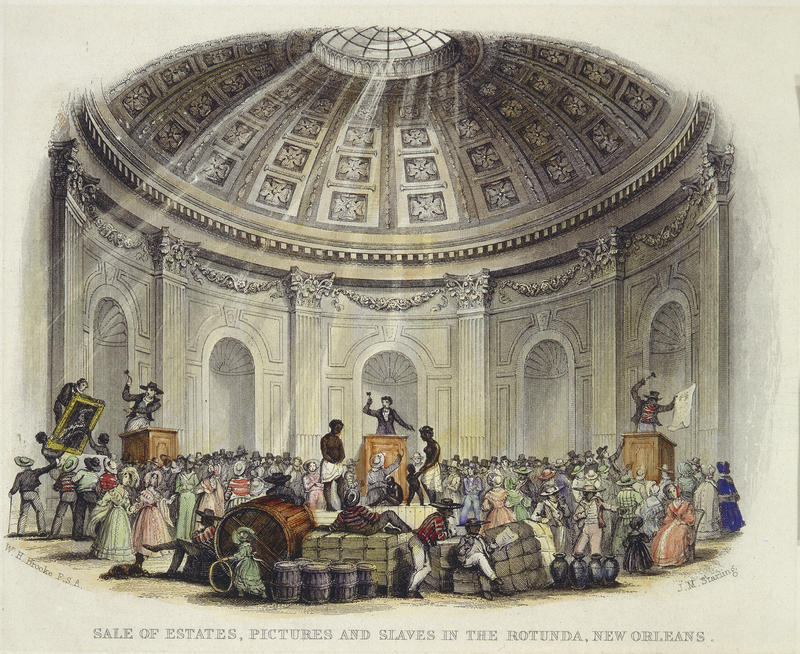
The hotel remained a central hub of life and business until it was captured by Union soldiers in 1862. For the remainder of the Civil War it served as a Union hospital, destroying much of its grandeur and elegance.
From 1865 until 1867, during Reconstruction, the building was sold to the state of Louisiana and became its de facto capital. After Reconstruction, the building was sold from one owner to the next, serving either as a hotel or a bank, until the hurricane of 1915 left it in a heap of rubble.
Over the years, Exchange Place had accrued an impressive maze of bars and a not-so-impressive reputation. A recurring joke was that the street had gotten its name because men who frequented them were exchanging a successful future for a decadent present.
Some New Orleanians, however, were unhappy with the direction of their beloved French Quarter. After much discussion in the city about restoring the historic Quarter’s charm and prominence, one step in that direction was when, in 1960, the hotel on St. Louis Street was finally rebuilt, now as the Royal Orleans. The 20th-century hotel encompassed the same European grand design as the old one, including the “exact drawings of the remaining stone arches … and [the] exact duplicates of the Spanish wrought iron railings” which had once graced the hotel.
In 1986 Omni Hotels of Dallas, Texas, took over the hotel’s lease and named it the Omni Royal Orleans.
Past and present
The enormous Omni Royal Orleans stretches the entire length of St. Louis Street between Chartres and Royal. Ornate gas lanterns hang from the outer balcony beside slim green columns spaced every few feet. The number of windows and rooms is astounding.
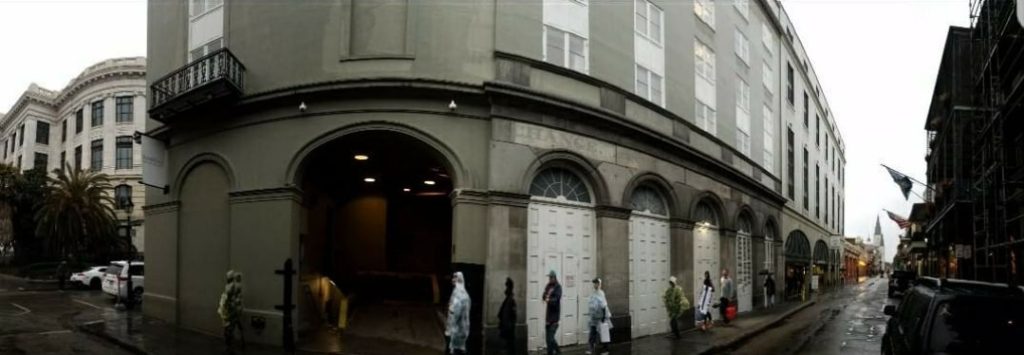
Beginning in the 1830s, Exchange Passage passed directly through the St. Louis Hotel and, conveniently, its bar. In his book, Chase writes that this hotel bar was the finest in the city at the time. He even revealed an innovation that occurred there.
“The real business in the exchanges—the auctioneering,” he wrote, “took place between the hours of noon and three o’clock. There simply wasn’t time to stop at a bar, go home for lunch, and get back to business. The St. Louis Hotel Bar would give free lunch—soups, vegetables, a choice of meats and bread—to any customer who came in for ‘a toddy.’”
This idea spread throughout New Orleans, and across America, resulting in bars competing for customers through the quality of their free lunch—a practice that lasted all the way until Prohibition.
Today, inside the Omni Royal Orleans, a modern-day hotel bar, Touché Bar, sits to the left of what would have been Exchange Place. You might still be able to order a hot toddy, but you’ll be dismayed to learn it no longer comes with a free lunch.
Taking care of business
From the bar, Exchange Passage would have continued through the hotel and out the back into Improvement Bank (which later became Citizens Bank), and then out of the bank onto Toulouse Street. But, sadly, this path no longer exists.
The best you can do is to exit the bar to Royal Street and walk downriver, parallel with where Exchange Place would have been.
Royal Street is teeming with day-time shoppers and tourists. You can make a right on the next street you run into, Toulouse Street.
Chase writes that continuing on Exchange Passage from Toulouse was tricky, but that historians suggest “surmising businessmen” may have hopped a fence to forge ahead. In the 1840s, there was talk of the First Municipality (the governing authority for the French Quarter when—as mentioned earlier—the city split into three) buying property and clearing a right-of-way for Exchange Passage to the next street, St. Peter Street. But that never happened, and the alley never achieved more than a dotted line on maps between Toulouse and St. Peter.
Or so we are told…
Walking down Chartres Street, you’ll next reach St. Peter Street. Make a left to where Exchange Place would have run. Look to your left and you will find a small alleyway behind a fence one can imagine would have been the remnants of that dotted line on the map.
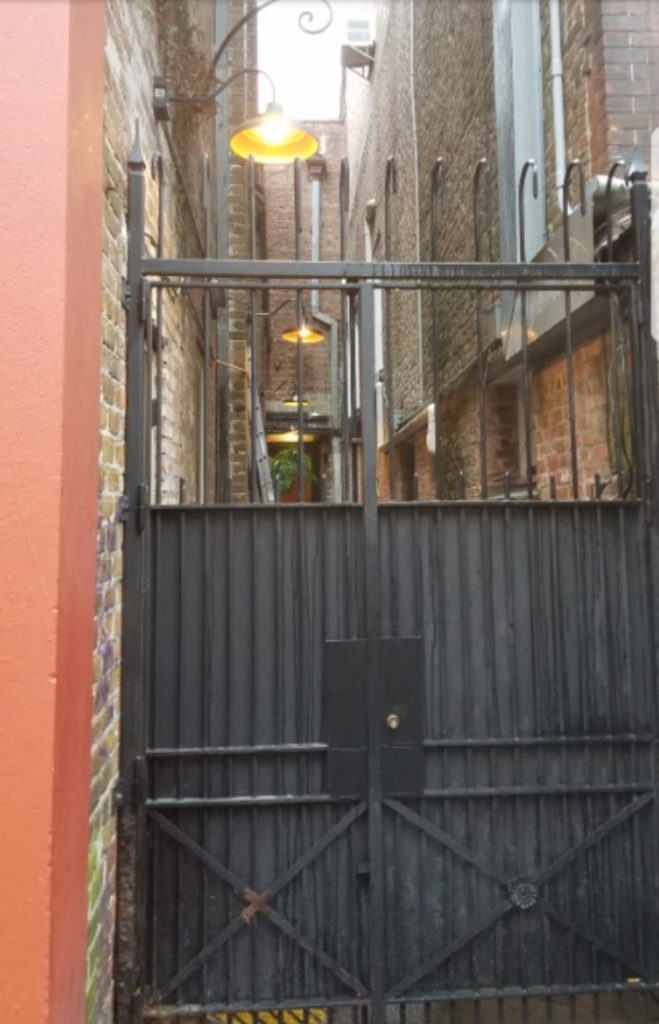
Then, look to your right. Here is another alley. Today it is called Cabildo Alley, but it was once certainly the final piece of Exchange Place. It extends one block, from St. Peter Street to Pirates Alley (originally created in 1831 as a path around the St. Louis Cathedral Garden).
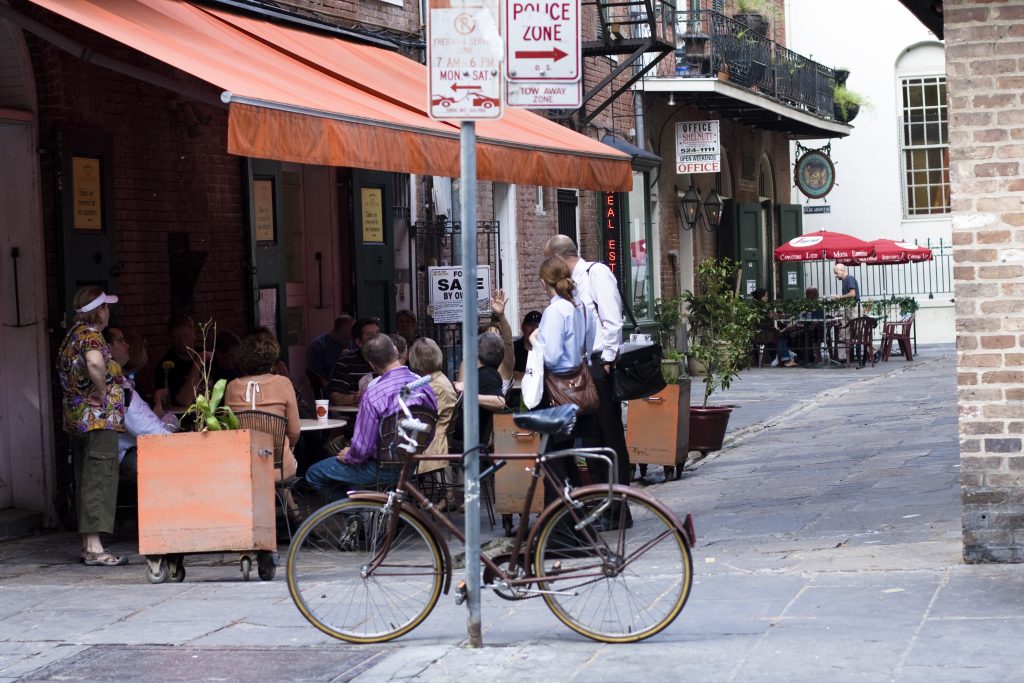
The Cabildo, just on the other side of Cabildo Alley, originally had a prison attached to it. Unlike on the previous block, the First Municipality agreed to accommodate a young Exchange Place. The fence of the prison was moved back to make room for this last stretch of road, allowing men to walk directly to the Cabildo’s courthouse, in order to more easily handle business.
No women allowed
You’ll probably need to dodge a ghost tour or two, as well as artists, vacationers, cyclists, and so much more before you can exit the alleys and find your way to Jackson Square.
It’s a lot of work, but maybe not as much as those 19th century businessmen would have had to contend with. Think about it. Walking through buildings? Jumping fences? Maneuvering around prisons?
Why not just walk on Chartres or Royal streets, only half a block on either side?
As with so many questions, Chase has an interesting explanation:
“Chartres and Royal were the two great shopping streets of the First Municipality. Women were there! Women buying bonnets and parasols and lace and calico, etc., etc. Women are wonderful, the men of business reasoned, but they didn’t mix with business. Exchange Passage was a stag street hemmed in by petticoats.”
Fair enough. According to the Daily Picayune newspaper, letters going to the Merchant Exchange post office that were addressed to men were delivered to the Exchange Passage entrance, while mail addressed to women were delivered through the Royal Street side.
Shortly after Prohibition, however, things changed. A reporter for the Item-Tribune surveyed the situation in 1934, during the Great Depression. A barkeep told the journalist this:
“A woman, she was an unusual sight in the alley—everyone used to leave the bar and go outside and look at her when one passed. But…the way it is now, there’s proportionally as many women as men who come in at night to take a little quiet glass of beer or something stronger.
“We used to be the poor man’s club, but now we’re the poor woman’s club, too, and there ain’t too many rich men or women’s clubs no more. Not where you can get ten ounces for a nickel, no sir.”
Out of favor
Eventually these big, multi-purpose exchanges fell out of favor. That, in part, had to do with the struggles of the South’s economy during and after the Civil War.
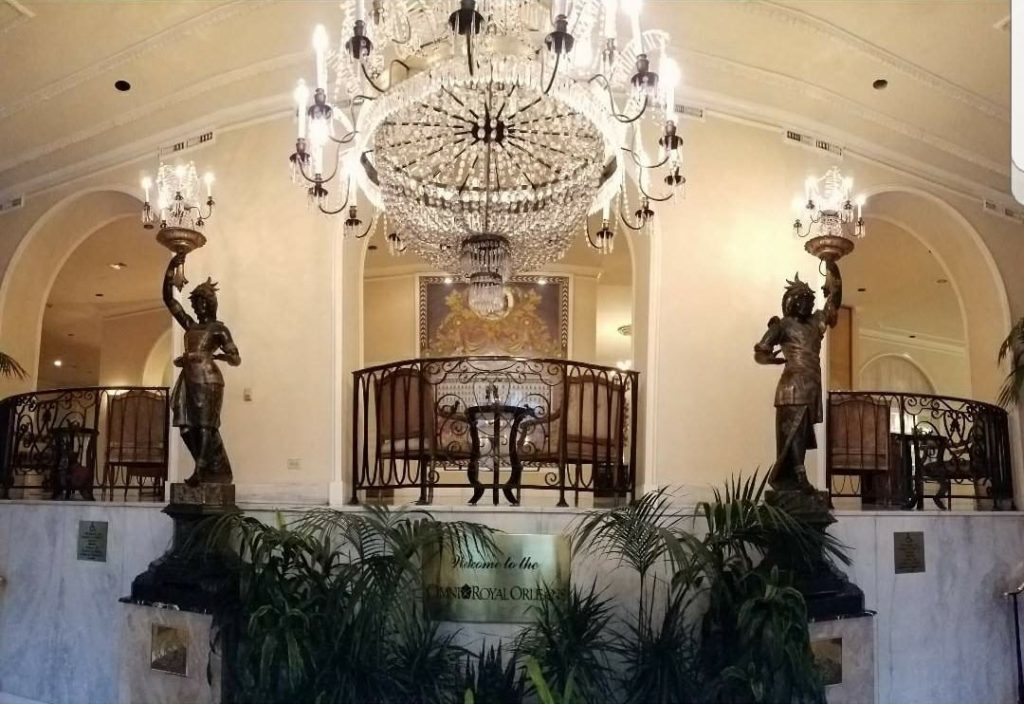
But their decline was also due to their success. As the economy rebounded, many industries decided they wanted their own exchange, rather than being part of more general establishments. The Cotton Exchange was established in 1871. The Produce Exchange was founded in 1880. The Louisiana Sugar Exchange in 1883. And a Stock Exchange in 1906. These are just a few of many local examples.
As the 20th century progressed, the city would invest quite a bit of money to make Exchange Place less a place for locals to drink and more a place for tourists to shop. But taking a walk down this narrow street on a weekday afternoon was a reminder of the incredible commercial success—but also the growing challenges—of 19th century New Orleans.